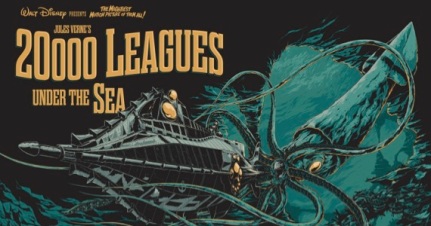Ok so this has taken a while to write up, conferences and the like interfering. However, we did get round to discussing this book a few months ago. One question which came up while discussing this book was over Verne’s use of science. In chapter 3 Verne describes the Nautilus and the technologies behind it. The Nautilus is most definitely a futuristic Submarine and far in advance of the technological capabilities of its day. Indeed submarines did not reach a similar level of technological ability until the advent of nuclear powered submarines in 1951 with the launching of the appropriately named USS Nautilus, even today modern submarines are unable to achieve the speeds or depths attributed to Nemo’s vessel. The principles used were well known to scientists and engineers of the day, the main problem being that the technology of the time was not yet capable of achieving the results demonstrated by the Nautilus. A case in point is Verne’s use of electricity which is well in advance of even the more optimistic hopes of electrical enthusiasts of the day. To quote Captain Nemo,
“There is a powerful, obedient, swift and effortless force that can be bent to any use and which reigns supreme aboard my vessel. It lights me, warms me, it’s the soul of my mechanical equipment. This force is electricity.”
By the 1870s the Bunsen cell used by Nemo was already an old technology and Verne was clearly aware of its limitations. However, rather than trying to explain how these problems were overcome, instead he sidesteps the issue by choosing to let Professor Aronnax acknowledge the results without trying to explain them.
“I’ll rest content with marvelling. You’ve obviously found what all mankind will surely find one day, the true dynamic power of electricity.”
Verne appears to see technology, and especially electricity as providing freedom and independence. By means of electricity the Nautilus can move at will, faster and farther than any other craft of the day. It provides Nemo with a means of withdrawing from a society which he has rejected and to focus on a way of living in harmony with the oceans rather than exploiting and destroying resources; again this draws on contemporary visions of electricity as a non-polluting source of energy.
One other aspect of the story is the mystery of the oceans. The initial speculations of the Nautilus being some previously unknown sea monster reflect the lack of knowledge of the oceans depths, both in terms of animal and plant life as well as actual geography, for example his supposition of an “Arabic tunnel” connecting the Red Sea and the Mediterranean, something which we now know to be an impossibility.
In general Verne appears to makes us of his knowledge of contemporary science and technology to predict possible advances and discoveries and the potential consequences of these developments.


